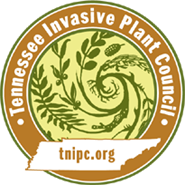Bromus sterilis L.
Barren Bromegrass, Poverty Brome| Category |
|---|
| Grass |
|
Similar Species May be confused with the following native and/or non-native species. Landscape Alternatives lists native horticultural substitutes |
Landscape Alternatives |
|---|

Description
Height
This annual, tufted grass grows up to 20 inches (50 cm).Leaves
The tops of the leaf blades are hairy while the underside is smooth. Leaves are typically droopy and are about 4-10 inches (5-25 cm) long and 0.08-0.4 in (2-10 mm) wide. The newest leaves are typically rolled, the ligules are toothed, and the sheath turns to a purple color at maturation.Flowers
This grass has distinct open panicles that range in length from 4-10 inches (5-25 cm). Spikelets within the panicle contain 3-9 florets and long awns.Fruit
Fruit production is the primary form of reproduction. An individual plant can produce up to 3,000 seeds.Images
Photo: Richard Old, XID Services, Inc., Bugwood.orgMore images of Bromus sterilis
Life History
3. HabitatThis species is primarily listed as an agricultural weed in parts of Europe, the US, and Canada. However, it is also found in disturbed sites, like roadsides and abandoned areas, and more pristine sites, such as meadows and rock outcrops.
Origin & Distribution
Poverty Brome is native to Eurasia but has been introduced worldwide including in North Africa, the Americas, Australia, and New Zealand. This species is now found across most of North America, including the Pacific Northwest, desert southwest, mid-Atlantic and southeast, excluding Georgia, South Carolina, Florida and Louisiana.Sources
Gary Oak Ecosystem Recovery Project. Field Manual: Invasive Species in Garry Oak and Associated Ecosystems in BC. http://www.goert.ca/pubsinvasive.phpGrass Weed Database: Bromus sterilis
http://www.bayercropscience.com.mx/gwdsite/frameset.html?http://www.bayercropscience.com.mx/gwdsite/gwd/en/BROST.html
USDA PLANTS Database: Bromus sterilis L:
http://plants.usda.gov/java/profile?symbol=BRSE
UK Wildflowers.com, Anisantha sterilis
http://www.ukwildflowers.com/Webpages/anisanthasterilisbarrenbrome.htm
